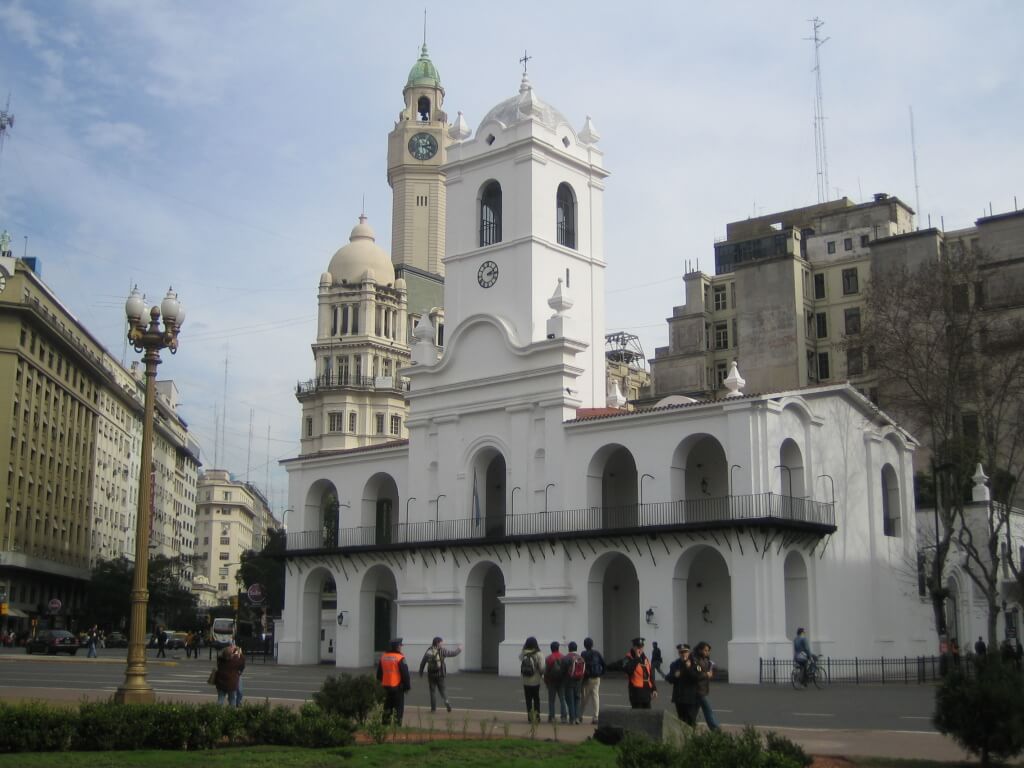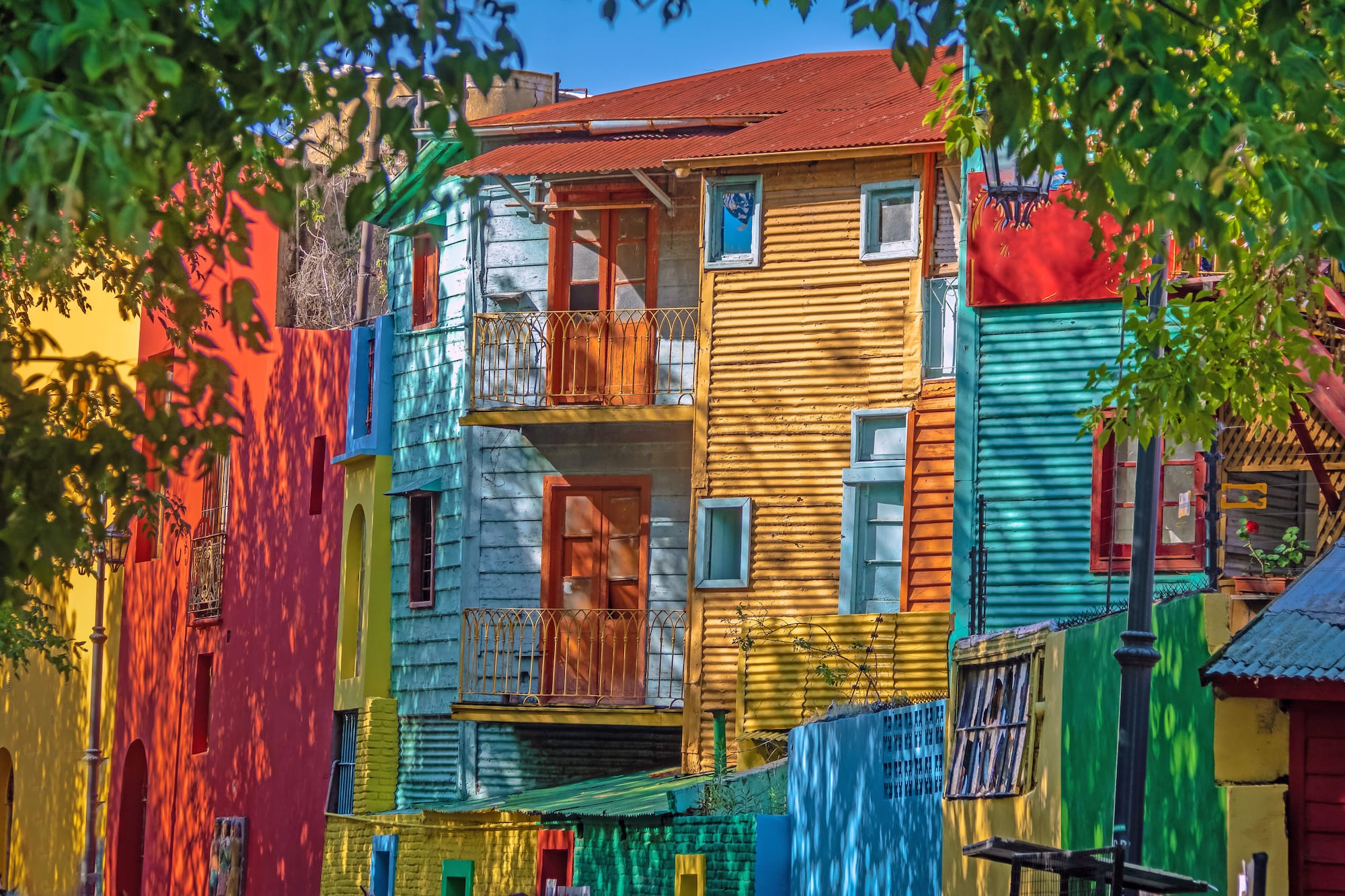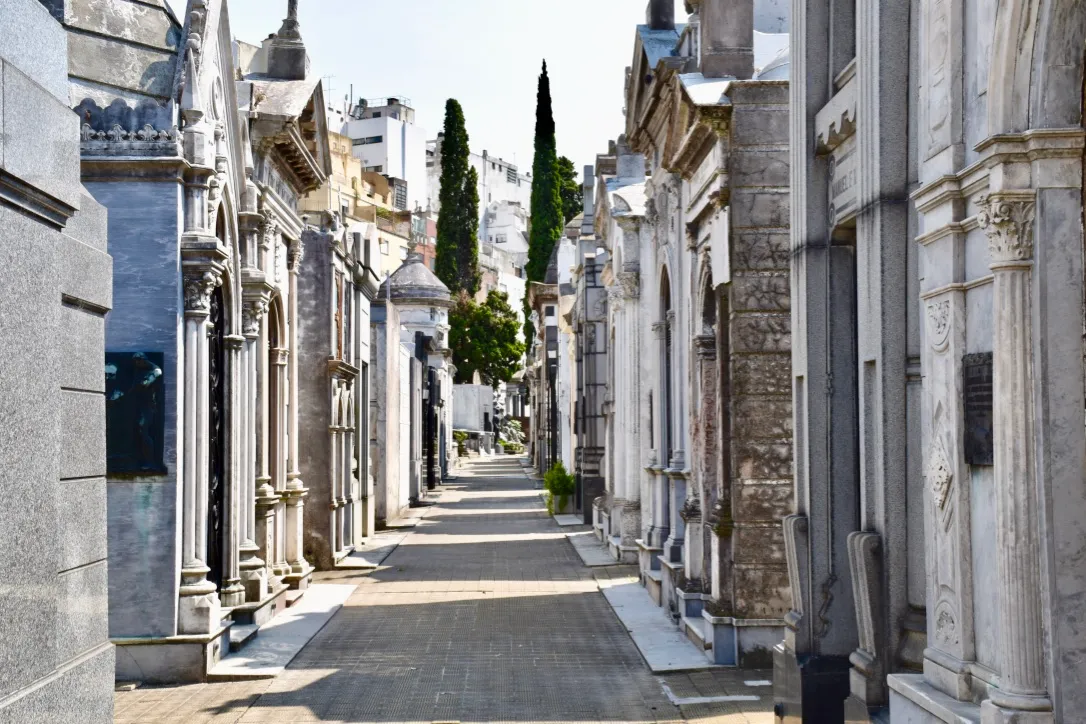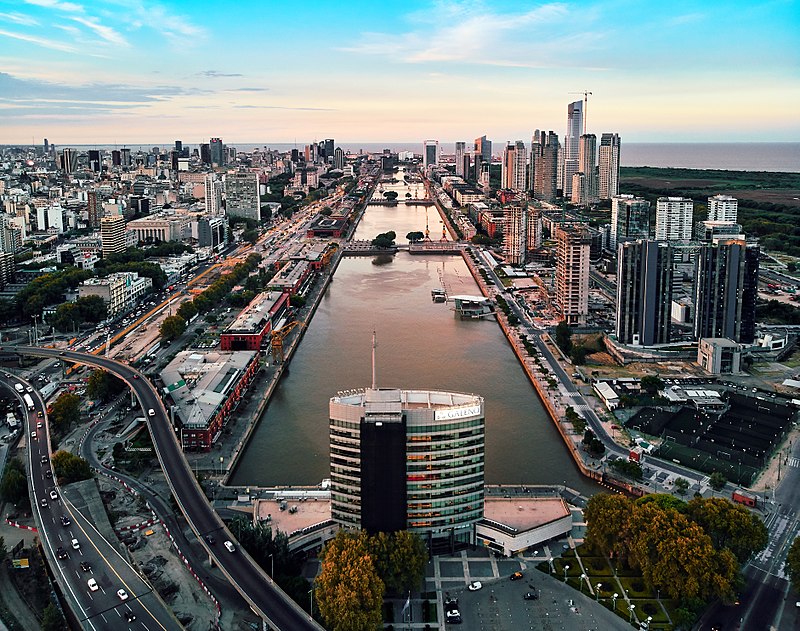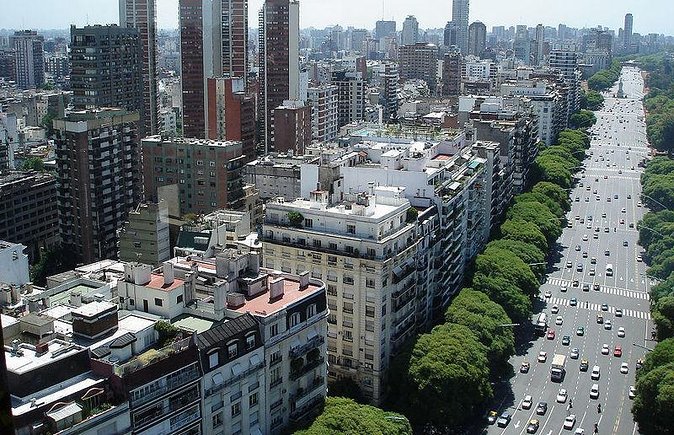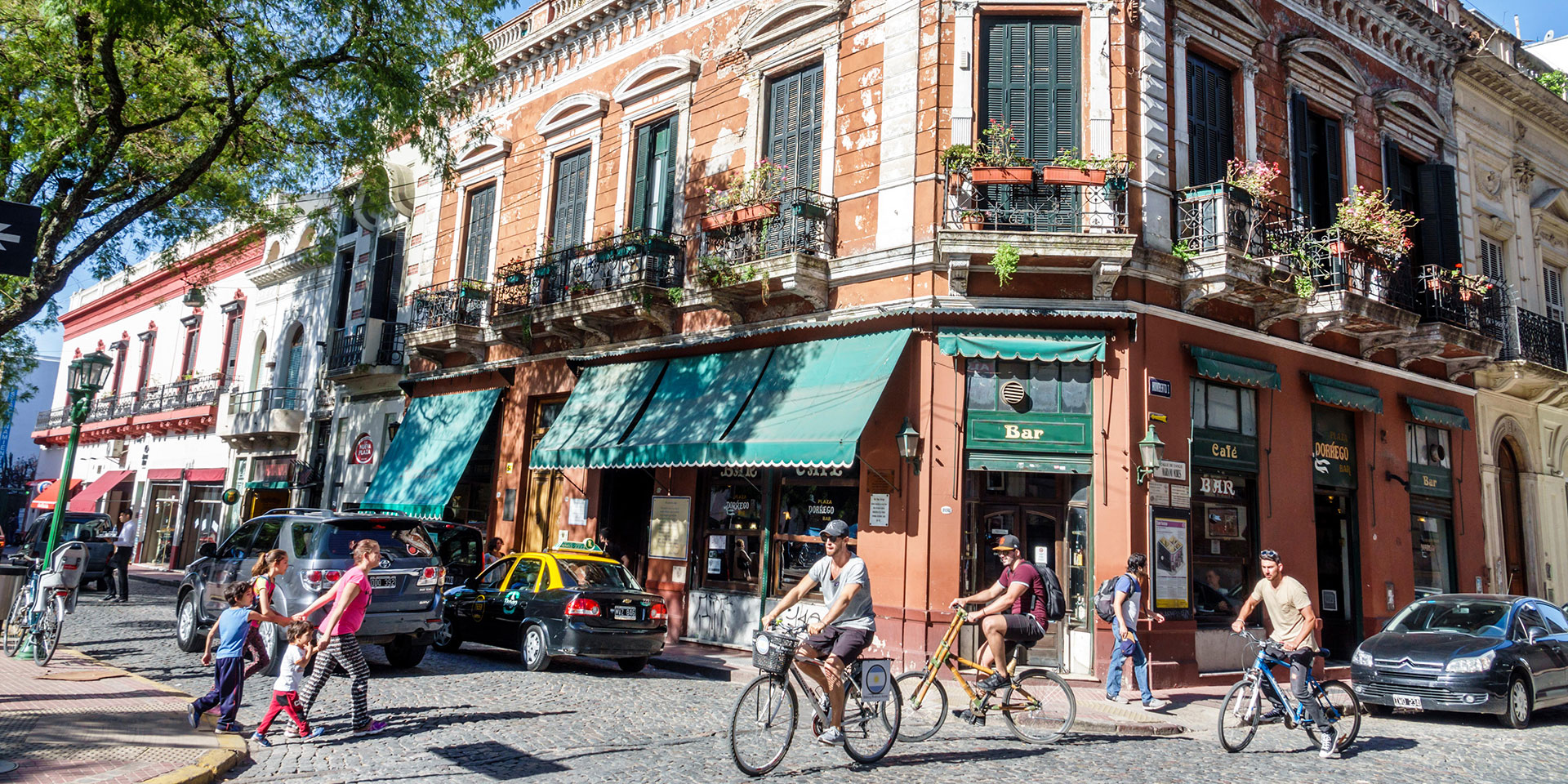Buenos Aires - From Historic Architecture To Modern Street Art
Buenos Aires Pictures captures the vibrant essence of Argentina's capital, showcasing its iconic landmarks, colorful neighborhoods, and rich cultural scenes. From the historic charm of San Telmo to the grandeur of the Casa Rosada, Buenos Aires Pictures offers a visual journey through the city's diverse architecture and lively street life.
Author:Sophia HarperReviewer:Liam JonesNov 02, 202454.5K Shares924.7K Views
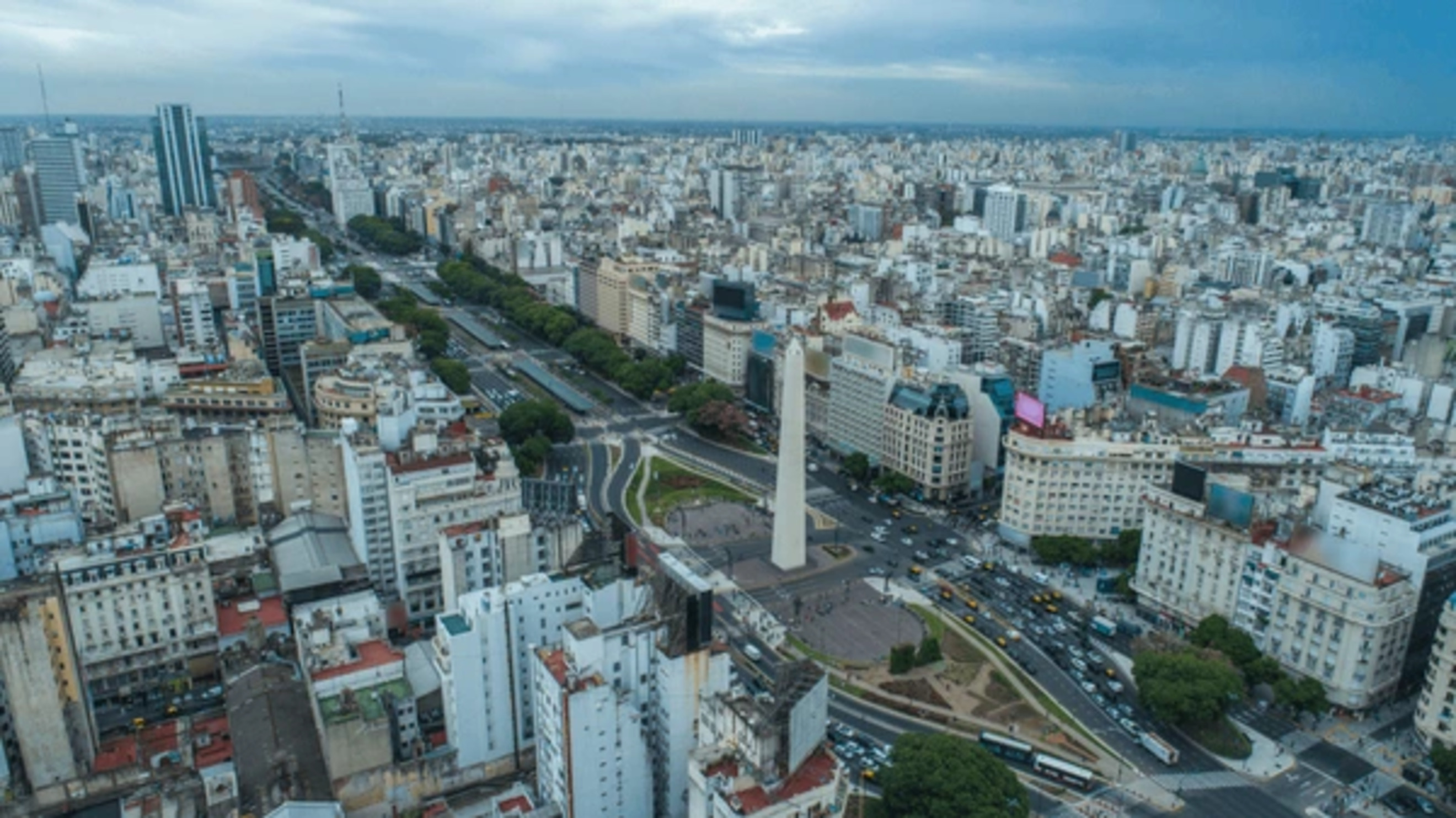
Argentina's capital and primate city is Buenos Aires, formally known as the Autonomous City of Buenos Aires. Situated on the southeast coast of South America, the city is situated on the western bank of the Río de la Plata. The Spanish phrase "Buenos aires" means "fair winds" or "good airs". Buenos Aires is ranked by the Globalization and World Cities Research Network (GaWC) 2020 as an Alpha global metropolis.
Buenos Aires is an autonomous district and neither a part of Buenos Aires Province nor the Province's capital. Following decades of political squabbling, Buenos Aires was separated from Buenos Aires Province and federalized in 1880. The settlements of Belgrano and Flores, which are now city neighborhoods, were added to the city borders. The city was given autonomy by the 1994 constitutional change, which is why the Autonomous City of Buenos Aires is its official name. Before 1996, when a Chief of Government was first elected by the people, the Mayor was chosen directly by the President of Argentina.
Historic Plaza De Mayo
Plaza de Mayo is the historic and political heart of Buenos Aires. This iconic square is surrounded by some of the city’s most significant landmarks, including the Casa Rosada, the Metropolitan Cathedral, and the Cabildo. Each building holds a unique place in Argentina's history, making Plaza de Mayo a focal point for both historical and cultural exploration. The pink façade of the Casa Rosada, Argentina's presidential palace, stands out as a symbol of the nation's political heritage and is a must-capture for any photographer.
Photographers are drawn to Plaza de Mayo not only for its historical significance but also for its vibrant atmosphere. The square is often bustling with activity, from political demonstrations to cultural events. This dynamic environment provides ample opportunities to capture the lively spirit of Buenos Aires. The combination of historic architecture and contemporary life creates a rich tapestry that is both visually and culturally compelling.
The Colorful La Boca
La Boca, perhaps the most colorful neighborhood in Buenos Aires, is famous for its vibrant houses and lively street scenes. Caminito Street, in particular, is a magnet for photographers, with its brightly painted buildings and dynamic atmosphere. The neighborhood's rich history as an immigrant quarter and its close association with tango music add layers of depth to the visual experience. Each building in La Boca tells a story, making it an essential part of any Buenos Aires photo collection.
Street performers, especially tango dancers, add an extra layer of energy and color to the area. The vibrancy of La Boca is palpable, with each corner offering new surprises. From murals and sculptures to live performances, the neighborhood is a feast for the senses. Capturing the vibrant hues and spirited life of La Boca allows photographers to convey the neighborhood’s unique blend of cultural influences and artistic expressions.
Elegant Recoleta
Recoleta is synonymous with elegance and sophistication. This upscale neighborhood is home to the famous Recoleta Cemetery, where intricate mausoleums and sculptures create a fascinating if somber, photographic subject. The cemetery is the final resting place of many notable figures, including Eva Perón, whose tomb is a major highlight. The serene and ornate beauty of Recoleta Cemetery provides a stark contrast to the bustling life of the city, making it a unique spot for photography.
Beyond the cemetery, Recoleta boasts beautiful architecture, such as the luxurious Alvear Palace Hotel and the Recoleta Cultural Center. These landmarks showcase the neighborhood's blend of historical grandeur and modern luxury. The tree-lined streets, elegant cafés, and upscale boutiques further enhance the neighborhood's charm. Photographers can capture both the historical and contemporary aspects of Recoleta, making it a rich and varied subject for any photo collection.
Modern Puerto Madero
Puerto Madero offers a striking contrast to the historic neighborhoods of Buenos Aires. This revitalized dockland area is now a modern hub, characterized by sleek skyscrapers, upscale restaurants, and scenic waterfront views. The area's transformation from industrial docks to a trendy urban center is a testament to Buenos Aires' dynamic development. Puerto Madero's modern architecture and design make it a prime location for capturing the city's contemporary side.
The Puente de la Mujer (Woman’s Bridge), designed by renowned architect Santiago Calatrava, is one of the most photographed structures in Puerto Madero. Its sleek, futuristic design against the backdrop of the city skyline provides compelling and visually stunning images. The waterfront area, with its mix of old docks and new buildings, offers diverse photographic opportunities. Puerto Madero exemplifies the city’s ability to blend the old with the new, making it an essential part of any Buenos Aires photo journey.
Vibrant Palermo
Palermo, the largest neighborhood in Buenos Aires, is known for its diversity and trendy vibe. Palermo Soho, with its eclectic mix of boutiques, cafes, and street art, is particularly popular among photographers. The neighborhood's vibrant culture and artistic spirit are reflected in its colorful murals and creative spaces. Wandering through the streets of Palermo Soho, photographers can capture the essence of Buenos Aires' contemporary urban culture.
Palermo is also home to the lush greenery of the Palermo Woods and the serene Japanese Gardens, which offer a tranquil contrast to the bustling city streets. These green spaces provide perfect settings for nature photography, with their beautifully landscaped gardens and scenic walking paths. The vibrant nightlife in Palermo further adds to its photographic appeal, with dynamic and colorful scenes that capture the energy of Buenos Aires after dark.
The Cultural Hub Of San Telmo
San Telmo, one of the oldest neighborhoods in Buenos Aires, exudes a bohemian charm with its cobblestone streets, antique shops, and historic buildings. The San Telmo Market is a bustling spot where you can capture the essence of local life, with vendors selling everything from antiques to fresh produce. The market's lively atmosphere and eclectic offerings make it a prime location for candid street photography.
On Sundays, the famous San Telmo Fair transforms the neighborhood into a vibrant outdoor market. Street performers, tango dancers, and musicians fill the streets, creating a lively and colorful spectacle. This weekly event provides endless photographic opportunities, allowing visitors to capture the vibrant culture and artistic spirit of San Telmo. The neighborhood's rich history and dynamic present come together in a captivating blend, making it a must-visit for any photographer exploring Buenos Aires.
Buenos Aires - FAQs
What Is The Best Time To Visit Buenos Aires?
The best time to visit Buenos Aires is during the spring (September to November) and fall (March to May) when the weather is mild, and the city is alive with cultural events and festivals.
What Are The Must-see Attractions In Buenos Aires?
Must-see attractions in Buenos Aires include the colorful neighborhood of La Boca, the historic Plaza de Mayo, the iconic Obelisco, the elegant Teatro Colón, and the vibrant San Telmo market.
How Can I Get Around Buenos Aires?
Buenos Aires has an extensive public transportation system, including buses, the subway (Subte), and taxis. Walking is also a great way to explore many of the city's neighborhoods.
What Is Buenos Aires Known For?
Buenos Aires is known for its rich cultural heritage, tango music and dance, European-style architecture, vibrant nightlife, and as the birthplace of famous figures like Eva Perón and Jorge Luis Borges.
Is Buenos Aires Safe For Tourists?
Buenos Aires is generally safe for tourists, but it's important to take standard precautions such as avoiding poorly lit areas at night, being mindful of your belongings, and staying aware of your surroundings.
What Is The Local Cuisine Like In Buenos Aires?
The local cuisine in Buenos Aires is heavily influenced by Italian and Spanish flavors. Must-try dishes include asado (barbecue), empanadas, milanesa, and the iconic dulce de leche desserts.
Do I Need To Speak Spanish To Visit Buenos Aires?
While many people in the tourism industry speak English, knowing some basic Spanish phrases can be very helpful and enhance your travelexperience in Buenos Aires.
Final Words
Buenos Aires is a city of contrasts and diversity, where every neighborhood tells a different story. From the historic grandeur of Plaza de Mayo to the colorful streets of La Boca, the elegance of Recoleta, the modernity of Puerto Madero, the vibrancy of Palermo, and the cultural richness of San Telmo, Buenos Aires picturesoffer a comprehensive visual journey through one of South America's most captivating cities. Whether you are a professional photographer or a casual traveler, the enchanting beauty of Buenos Aires is sure to leave you with a camera full of unforgettable memories.

Sophia Harper
Author
Sophia Harper’s photography acts as a portal to the soul of the places she visits. Drawn to South America’s landscapes and cultures, she has spent years capturing everything from the majesty of ancient ruins to the vibrancy of urban streets.
Sophia’s work isn’t just about documenting moments; it’s about evoking the emotions and stories behind them. A dedicated photographer, she has worked with local communities across South America to capture their rich cultural narratives through her lens.
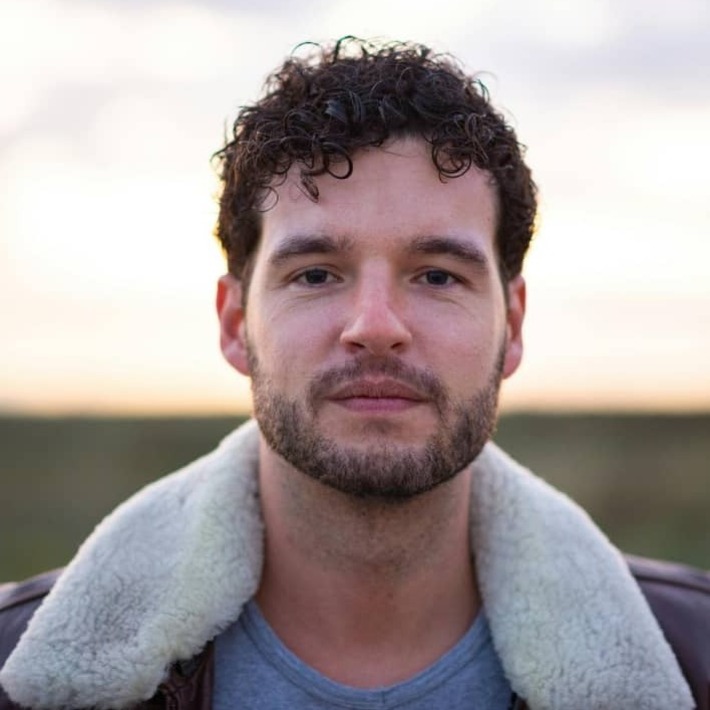
Liam Jones
Reviewer
Liam Jones has made it his mission to prove that adventure doesn’t need a hefty budget. Having traveled to over 40 countries, he specializes in finding affordable ways to experience the world, from the best street food in Bangkok to hidden gems in Lisbon.
Liam’s travel tips have reached thousands of readers, empowering them to see the world on a shoestring budget without sacrificing quality. With a deep passion for local cultures, he continues to share his travel hacks, ensuring adventure remains accessible to all.
Latest Articles
Popular Articles
